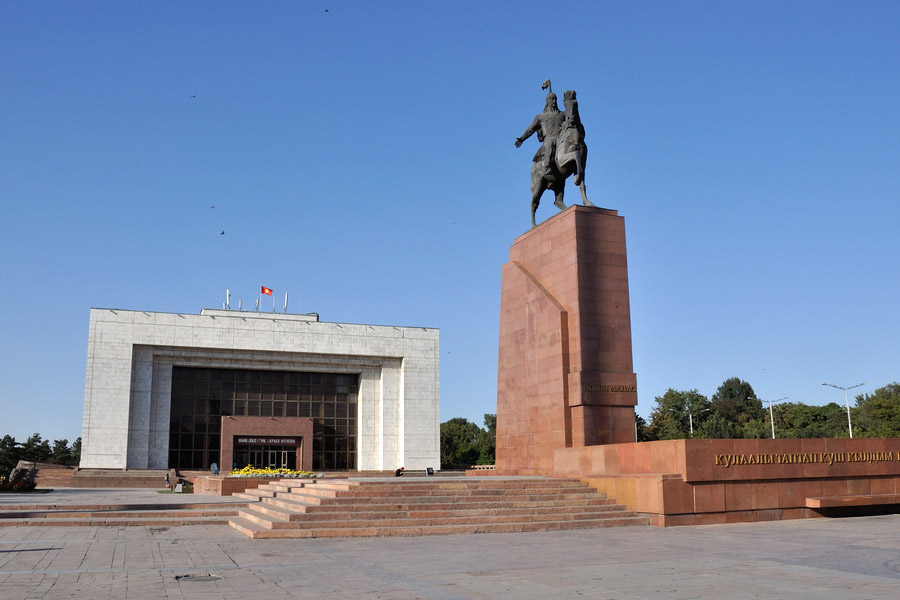
Bishkek is easy and inexpensive to navigate. The streets are set up as a grid, and the city is relatively small, which makes Bishkek easy to navigate on foot or by car. Bishkek is wide and flat, and the mountains to the south are almost always in view. The center of Bishkek is a rather large percentage of the city, covering the area between Sovietskaya and Manas Streets, from Bokonbaeva St to several blocks north of Prospect Chuy. Public transportation (minibuses and regular busses) run from 5:30-6:00 in the morning until 21:30-22:00 at night.
On Foot
One can cover a large part of Bishkek on foot in under an hour. It is relatively easy to navigate the city even if one isn’t familiar with the city. This is probably the best way to explore the city, and to see the shops and restaurants, or just to people watch. However, there are several issues that can cause problems for pedestrians: unmarked potholes, ditches and uncovered manholes; poor lighting; and lack of right-of-way for pedestrians. Visitors are easily identified by locals, and though people are generally friendly, intoxication can also cause problems.
Taxis
Taxis are widely available and cheap. Official taxis are marked with a tent on the roof, and will have meters. There are several taxi apps available, through which users can order taxis, which are generally easier to use for those with limited Russian. Otherwise, there are a number of services one can call and a dispatcher will send a car to your location. These services are fairly reliable, quick, and do not require haggling, so the price is generally lower.
Unmarked or unofficial taxis are quite common, and require negotiating a fare. Quite often unofficial taxis will also have a tent on the roof, though the driver may take it off as soon as you get in. Many drivers will try to charge more if they feel you can pay it, so haggling is usually necessary. 70-100 som is normal for shorter rides, though rides to destinations further away can cost up to 200 som.
When entering a taxi, give your destination as an intersection or famous landmark, as sometimes drivers won’t know where a specific restaurant or hotel is located simply by name.
Minibuses (Marshrutka)
Marshrutkas (marshrutki in Russian) are the hundreds of white vans driving in all different directions with numbered signs. Each marshrutka has a fixed route (which can be determined by the number and list of landmarks on the route in the windshield), but no fixed stops. You can flag down a marshrutka anywhere along its route by holding your arm out parallel to the ground, and you can exit by telling the driver to stop at a bus stop or intersection. Marshrutkas are cheap - they cost 10 som until 21:00, after which they cost 12 som. In Bishkek, pay when you enter the marshrutka; in Osh, pay when you exit.
Marshrutka etiquette asks that younger people give up their seats for older people and women with children. If standing, try to find a spot that’s out of the way, don’t step on other passenger’s toes, and let people pass when they’re exiting. Marshrutkas can get quite crowded, and drivers aren’t known for their customer service, especially with confused tourists. For this reason, many tourists prefer to use taxis when traveling around Bishkek.
Trolleybuses and Diesel Busses
Trolleybuses are big busses that run off of power lines above the street. Diesel busses are similar, just that they run on diesel. Keep in mind that trolleybuses and diesel busses always run on different routes, even if they have the same number (a route 4 trolleybus is on a different route from a route 4 diesel bus). Enter from the back at bus stops, and pay 8 som to the driver when exiting. For those inclined to take public transportation, busses are slightly more comfortable than marshrutkas, though they tend to be slower.

